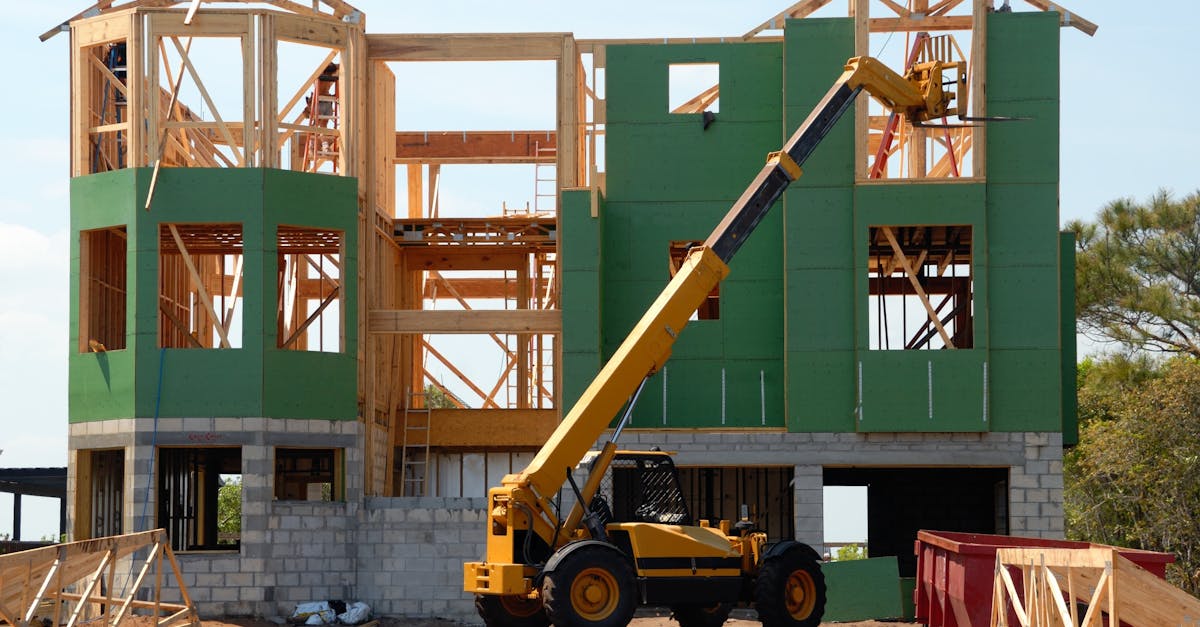
Future Trends in Land Use and Development Law
The increasing frequency of climate-related events necessitates a rethinking of land use practices. Urban planners and developers are incorporating resilience strategies to withstand the impacts of extreme weather. This involves focusing on adaptive designs that minimize vulnerability. Communities are exploring green infrastructure solutions that enhance natural absorption of stormwater while also contributing to local aesthetics.
Local governments are beginning to adopt zoning regulations that prioritize sustainability. The integration of renewable energy sources into new developments is gaining traction, alongside the implementation of energy-efficient building codes. These approaches not only reduce the carbon footprint but also encourage a shift towards more sustainable living arrangements. As climate change continues to pose challenges, the understanding and application of resilient development principles will become increasingly essential for long-term community viability.
Strategies for FloodResilient Communities
Flood-resilient communities can incorporate several strategic measures to mitigate the impacts of rising water levels and extreme weather events. Enhancing natural landscapes, such as wetlands and floodplains, plays a critical role in managing stormwater runoff. These areas serve as buffers, absorbing excess rainfall and reducing the risk of flooding. Additionally, implementing green infrastructure, such as permeable pavements and rain gardens, allows for better water infiltration and slows down water flow towards vulnerable areas.
Another effective strategy involves the adoption of zoning regulations that promote sustainable land use practices. Communities can prioritize the development of infrastructure on elevated ground while restricting high-density construction in flood-prone zones. This proactive approach not only protects property and lives but also preserves vital ecosystems. Collaboration between local governments, planners, and residents is essential to creating flood-resilient neighborhoods that can adapt to changing climate conditions.
The Rise of Community Land Trusts
Community land trusts (CLTs) have emerged as a powerful tool in addressing issues of affordable housing and community development. These nonprofit organizations acquire and hold land on behalf of a community, ensuring that housing remains affordable for future generations. By separating land ownership from housing ownership, CLTs can stabilize housing costs and prevent displacement of low-income residents. This model encourages community participation in land management and empowers local residents to make decisions about development and land use.
Models for Affordable Housing Solutions
Innovative approaches to affordable housing have gained traction as communities grapple with escalating costs and a housing crisis. Community land trusts (CLTs) have emerged as a promising model. These nonprofit organizations acquire land and develop it for long-term community use. By separating land ownership from housing, CLTs can maintain affordability over generations. This model empowers residents to invest in their neighborhoods without the crippling burden of market-driven prices.
Another noteworthy approach involves the development of micro-housing. This concept focuses on creating smaller living units that maximize space efficiency. Micro-housing appeals especially to young professionals and low-income individuals seeking affordable options in urban settings. As cities face increasing pressures from population growth, integrating micro-housing into urban planning can alleviate housing shortages. Community partnerships further enhance these efforts, fostering collaboration among developers, local governments, and residents to deliver sustainable and inclusive housing solutions.
Transportation Advances Shaping Development
The evolution of transportation infrastructure has a profound impact on urban development patterns. As cities expand and populations grow, the need for efficient transit systems becomes more pronounced. Innovations such as autonomous vehicles, electric public transit, and dedicated bike lanes create opportunities for planners to rethink how residents move within their environments. These advances not only enhance mobility but also reshape land use by encouraging denser, mixed-use developments that prioritize accessibility.
Integration of Public Transit in Urban Planning
Successful urban development increasingly hinges on the effective integration of public transit systems into urban planning. This integration promotes accessibility and supports sustainable growth, allowing communities to reduce reliance on personal vehicles. Incorporating transit-oriented design principles can lead to denser development close to transit nodes, encouraging public transportation use while minimizing environmental impacts.
Cities that prioritize public transit in their planning processes often see enhanced economic activity, as residents benefit from convenient access to jobs, education, and services. This emphasis on connectivity not only improves individual mobility but also fosters greater social interaction and community cohesion. Enhanced transit networks can lead to revitalized neighborhoods, ultimately shaping the future landscape of urban areas.
FAQS
What role does climate change play in land use and development law?
Climate change significantly influences land use and development law by prompting the need for regulations that support resilient development practices, such as building standards that account for extreme weather events and sustainable land management strategies.
How can communities become more flood-resilient?Table Of Contents
Communities can become more flood-resilient by implementing strategies such as creating green infrastructure, restoring wetlands, establishing floodplain zoning regulations, and investing in public education about flood risks and safety measures.The Role of Title Companies
What are community land trusts and why are they important?
Community land trusts (CLTs) are nonprofit organizations that acquire and hold land to provide affordable housing and preserve community resources. They are important for promoting equitable access to housing and protecting neighborhoods from market pressures.Services Provided by Title Companies